


xxxxxThe Italian Giuseppe Verdi gained both recognition as an opera composer and fame as a national hero with his Nabucco of 1842, the telling of an ancient event which, based on a Jewish struggle for freedom, inspired the Italian people in their own struggle against their Austrian masters. Today, however, Verdi is especially remembered for three works which began the process of transforming opera into an integrated musical drama: Rigoletto of 1851, and Il Trovatore (The Troubador) and La Traviata (The Fallen Woman) of 1853. And this process of throwing off the remnants of traditional Italian opera, with its rigid format and stilted librettos, was continued in his Aida -
GIUSEPPE VERDI 1813 -
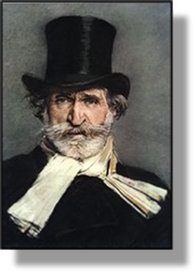 xxxxxGiuseppe Verdi, one of the greatest composers of Italian romantic opera, is remembered today for a number of brilliant works, all of which played an important part in transforming opera into an integrated musical drama. Foremost amongst these were Nabucco, Don Carlo, Rigoletto, Il Trovatore, La Traviata, Aida, and the masterpieces of his later years, Otello and Falstaff.
xxxxxGiuseppe Verdi, one of the greatest composers of Italian romantic opera, is remembered today for a number of brilliant works, all of which played an important part in transforming opera into an integrated musical drama. Foremost amongst these were Nabucco, Don Carlo, Rigoletto, Il Trovatore, La Traviata, Aida, and the masterpieces of his later years, Otello and Falstaff.
xxxxxHe was born during the Napoleonic Wars in Le Roncole, a village near Parma, and as a boy went to school and studied music in the neighbouring town of Busseto. There his musical talent was recognised and encouraged by a local amateur musician, a merchant named Antonio Barezzi. At the age of nineteen, having failed to gain entrance to the Milan Conservatory, he became a pupil of the composer Vincenzo Lavigna -
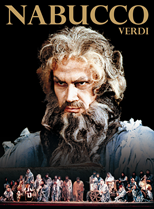 xxxxxNabucco, produced in 1842, was a phenomenal success and made Verdi’s name in Italy. Centred around the Babylonian captivity of the 6th century BC, when large numbers of Jews were exiled and held captive in Babylonia, it struck a patriotic chord with the Italian people, they themselves beginning their own struggle to overthrow their Austrian masters. His next two works I Lombardi of 1843 and Ernani, performed the following year, were also well received, but though other works followed, it was not until eight years later with his Rigoletto that he achieved like success, and on a much wider scale. This, together with Il Trovatore (The Troubador) and La Traviata (The Fallen Woman), both produced in 1853, brought him international fame, and a reputation that has survived to this day. These three works, each making their own particular demands upon dramatic content and orchestration, remain among the world’s best loved operas. By now, Verdi had clearly thrown off the remnants of traditional Italian opera -
xxxxxNabucco, produced in 1842, was a phenomenal success and made Verdi’s name in Italy. Centred around the Babylonian captivity of the 6th century BC, when large numbers of Jews were exiled and held captive in Babylonia, it struck a patriotic chord with the Italian people, they themselves beginning their own struggle to overthrow their Austrian masters. His next two works I Lombardi of 1843 and Ernani, performed the following year, were also well received, but though other works followed, it was not until eight years later with his Rigoletto that he achieved like success, and on a much wider scale. This, together with Il Trovatore (The Troubador) and La Traviata (The Fallen Woman), both produced in 1853, brought him international fame, and a reputation that has survived to this day. These three works, each making their own particular demands upon dramatic content and orchestration, remain among the world’s best loved operas. By now, Verdi had clearly thrown off the remnants of traditional Italian opera -
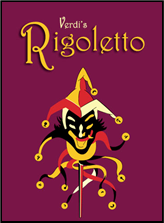
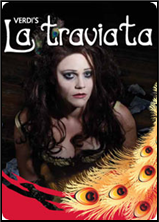 xxxxxBy the mid-
xxxxxBy the mid-
xxxxxAfter the premier of Aida in Cairo in 1871, and seemingly at the height of his career, Verdi chose to go into semi-
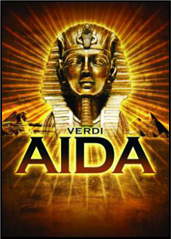
xxxxxIn assessing Verdi’s worth and contribution, it is perhaps sufficient to say that, over the years, his operas have remained the most frequently produced. Aida and La Traviata, for example, are still performed in theatres across the globe. His music is known above all for its delightful, impassioned melodies, whilst the quality of his production, improving over the years, integrated as never before the musical score with the drama unfolding on stage, a technique perfected in Otello. In essence, it was a unity of music and drama which, at the very same time, the composer Richard Wagner was creating in his musical dramas in Germany.
xxxxxBy developing and substantially broadening the changes introduced by his fellow composers and countrymen Gaetano Donizetti and Vincenzo Bellini, Verdi became not only the most important figure in the development of Italian opera during the 19th century, but also a composer of international renown whose works have long stood the test of time. He was to be followed by another great opera composer from Italy, Giacomo Puccini, famous above all for his La Bohème of 1896 (Vc).
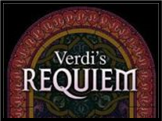 xxxxxAmong Verdi’s non operatic works was his Inno delli nazioni (Hymn of the Nations), composed in 1862, when he represented Italian musicians at the International Exhibition, held in London that year. Also worthy of note was his String Quartet in E minor of 1873, and his dramatic Requiem Mass, composed in 1874 in memory of the Italian novelist Alessandro Manzoni.
xxxxxAmong Verdi’s non operatic works was his Inno delli nazioni (Hymn of the Nations), composed in 1862, when he represented Italian musicians at the International Exhibition, held in London that year. Also worthy of note was his String Quartet in E minor of 1873, and his dramatic Requiem Mass, composed in 1874 in memory of the Italian novelist Alessandro Manzoni.
xxxxxIncidentally, it was the beautiful and moving chorus in Nabucco -
xxxxx…… Apart from operas based on plays by Shakespeare, Verdi based Ernani and Rigoletto on works by the French writer Victor Hugo, his La Traviata on The Lady of the Camellias by Alexandre Dumas the younger, and his Don Carlo on the tragedy of that name by the German dramatist Friedrich von Schiller. ……
xxxxx…… His opera I Vespri siciliani (The Sicilian Vespers) of 1855 was based on an incident in 1282 (E1) when the Sicilians rose up against their French masters. The theme did not escape the notice of the Italian public, nor the censors. ……
 xxxxx…… Verdi marked every new opera by planting a tree at his farm at Sant’ Agata in central Italy. For La Traviata he chose a weeping willow. ……
xxxxx…… Verdi marked every new opera by planting a tree at his farm at Sant’ Agata in central Italy. For La Traviata he chose a weeping willow. ……
xxxxx…… The story goes that when Verdi was an altar boy he was kicked by the priest for being late. In response Verdi cursed him and asked God to strike him with lightning. Later -
Va-
Acknowledgements
Verdi: by the Italian portrait painter Giovanni Boldini (1842-
xxxxxIt was in 1836, when Verdi was working on his first opera, Oberto, that the Russian composer Mickhail Glinka (1804-
Including:
Mikhail Glinka

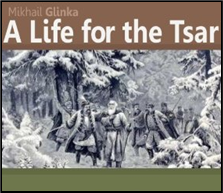 xxxxxIt was in 1836, when Verdi was working on his
xxxxxIt was in 1836, when Verdi was working on his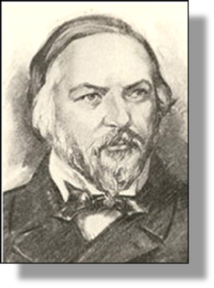 first opera, Oberto, that the Russian composer Mikhail Glinka (1804-
first opera, Oberto, that the Russian composer Mikhail Glinka (1804-
xxxxxHis second opera, Ruslan and Ludmila, produced in 1842 and taking as its theme a poem by the Russian poet Aleksandr Pushkin, was not so successful. Some of its music was drawn from Russian folk tunes, but, in accord with the fairytale setting, he also introduced oriental music, and this found little favour with the imperial court or the public at large. And in this work he made greater use of the set pieces characteristic of the Italian style. However, the lively Overture to this sparkling fairy tale has remained ever popular.
xxxxxGlinka was born in 1804, the son of a rich landowner. He was educated at St. Petersburg -
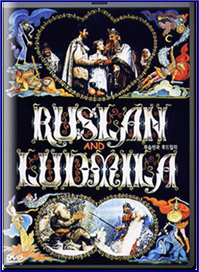
xxxxxRuslan and Ludmila, his less successful opera, was delayed somewhat because of a breakdown in his marriage. After it was produced in 1842, he took to travelling again, going first to Paris. Here in 1845 he attended the first performance of Russian music to be played in Western Europe: excerpts from his own operas, conducted among others by the French composer Hector Berlioz. He then spent two years in Spain during which time his love of the country’s music and dance inspired his two overtures, the Aragonese Jota and Summer Night in Madrid. He eventually returned to Russia in 1853 but, following the end of the Crimean War in 1856, he paid a visit to Berlin. It was there that he died in February 1857.
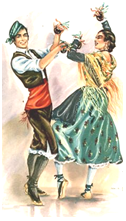 xxxxxApart from his works for the stage, Glinka’s orchestral pieces included the instrumental fantasia Kamarinskaya, and notable within his chamber music were his string quartet in F Major and his trio for clarinet, bassoon and piano. He also composed some 40 piano pieces and around 85 songs, many of them before 1835.
xxxxxApart from his works for the stage, Glinka’s orchestral pieces included the instrumental fantasia Kamarinskaya, and notable within his chamber music were his string quartet in F Major and his trio for clarinet, bassoon and piano. He also composed some 40 piano pieces and around 85 songs, many of them before 1835.
xxxxxGlinka, the first Russian composer to gain an international reputation, is regarded today as the “Father of Russian Music” in practically all its forms. By breaking away from the prevailing Italian influence, adapting Russian melodies to Western harmonies, and improving the role and quality of orchestration, he influenced a long line of Russian composers, including Modest Mussorgsky, Pyotr Tchaikovsky, Aleksandr Borodin, Nikolai Rimsky-
xxxxxIncidentally, as a wealthy man Glinka could and did lead a life of comparative ease. An amiable character, he enjoyed a good social life, and travelled widely for his own pleasure. Described as a “dilettante of genius”, his memoirs were not published until 1887, thirty years after his death.


